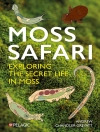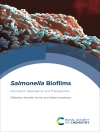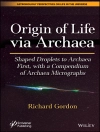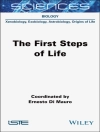Addressing parasitic diseases and those caused by bacteria, this much needed reference and handbook provides a unique insight into the approach adopted by commercial science towards infectious diseases, including the work of medicinal chemists. Many of the authors are scientists with hands-on experience of drug discovery units within the pharmaceutical industry. In addition, the text covers efforts towards drug development in infectious diseases from academic groups and non profit organizations.
Table of Content
Preamble
Editor Preface
PART I Drug Discovery Approaches
1 Target identification and mechanism-based screening for anthelmintics: Application of veterinary antiparasitic research programmes to search for new antiparasitic drugs for human indications
2 Anthelmintic resistance as a guide to the discovery of new drugs?
3 Drug discovery for neglected diseases: view of a public-private partnership
4 Bioinformatics and Chemoinformatics: Key Technologies in the Drug Discovery Process
5 Target identification and validation in anti parasitic drug discovery
6 Selective Drug Targets in Parasites
7 Lessons Learned From Target Based Lead Discovery
8 Approaches towards Antiparasitic Drug Candidates for Veterinary Use
9 Learning to Relate Structural Space with Property Space
10 Recruiting the Host Defense Mechanisms: Roles for Vaccines and Chemotherapeutics
PART II Protozoan Parasites
11 Proteases of Parasitic Protozoa –
Current Status and Validation
12 In Search of Trypanocidal Drugs
13 Trypanosomatid protein kinases as potential drug targets
14 Targeting the malaria kinome; discovering kinase inhibitors as novel antimalarial agents
15 Malaria and anti-malarials – a focused view
PART III Multicellular Parasites
16 Chemotherapeutic development strategies for schistosomiasis
17 Searching new Anti-Parasitics in the Virtual Space
18 Cyclooctadepsipeptides – an anthelmintically active class of compounds exhibiting a novel mode of action
19 Chemical Optimization of Anthelmintic Compounds – a Case Study
PART IV Bacteria
20 Pathogenomics: identification of novel drug targets and vaccine candidates in bacteria
21 Tuberculosis Drug Discovery: Issues, Gaps and the Way Forward
22 Decreasing the number of gaps in the draft assembly of the Mannheimia haemolytica M7/2 genome sequence
23 Total synthesis and configurational assignment of pasteurestin A and B, a natural product with antimicrobial acitivty on Pasteurellaceae
About the author
Prof. Dr. Paul M. Selzer studied Biology, Parasitology, and Biochemistry at the University of Tubingen, Germany, where he also received his Ph D in Biochemistry on subjects related to the protozoan parasite Trypanosoma brucei. As a post-doctoral fellow he spent three years in the parasitology and tropical disease laboratory of Prof. James H. Mc Kerrow at the University of California, San Francisco (UCSF). Within the Molecular Design Institute at UCSF Dr. Selzer was introduced to modern drug discovery approaches and technologies. He broadened his scientific and business knowledge as a researcher within diverse pharmaceutical companies including Boehringer Mannheim Gmb H, Germany, Smith Kline Beecham p.l.c., UK, Hoechst Roussel Vet Gmb H, Germany, and finally Intervet Innovation Gmb H, Germany, a part of Intervet/ Schering-Plough Animal Health. Dr. Selzer is also a teacher in Biochemistry, Bioinformatics, and Chemoinformatics at the University of Tubingen in the Department of Biochemistry, which awarded him the title of Professor for his achievements in teaching and research. In 2008, he was also awarded an Honorary Professorship in the Department of Infection and Immunity at the University of Glasgow.












